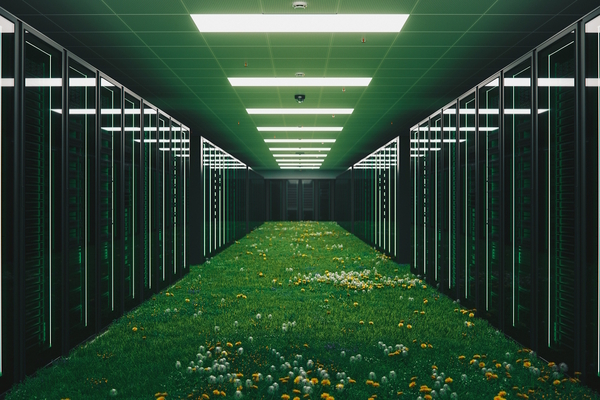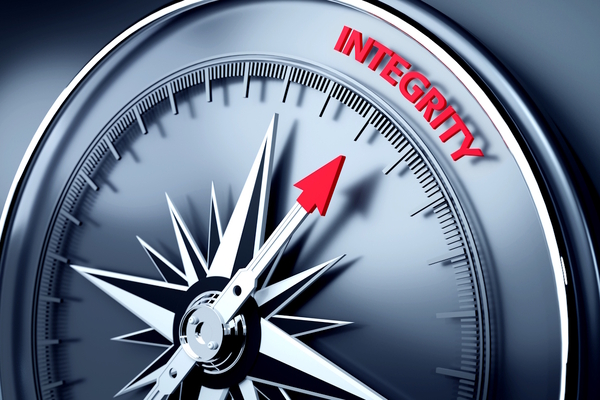Circularity: The path to sustainable business and beyond

Olivier Blum at Schneider Electric argues that the solution to sustainable living lies in embracing circularity—a system that prioritises resource reuse, waste elimination, and regeneration
Every year, we reach a date on the calendar where more of Earth’s resources have been used than it can replenish, termed ‘Earth Overshoot Day’. In 2024, Earth Overshoot Day fell on August 1st, meaning humanity has already used up more resources than the Earth can replenish in 12 months. This happened 1 day earlier than the year before, indicating that we’re moving backwards rather than forwards in reducing resource consumption.
When we talk about resources, it is more than just water, land, and energy. It has to do with the products we buy, business processes, and our consumption behaviours. I firmly believe that circularity is key to this vicious cycle of over-consumption. In this article, I explore what it is and why adopting circular strategies is the smarter choice for businesses.
What is circularity?
The Ellen MacArthur Foundation describes a circular economy as "designed to eliminate waste and pollution, circulate products and materials (at their highest value), and regenerate nature." At Schneider Electric, we echo this practice of using better, using longer and using again – preserving resources to extract the maximum value from them. It is not only common sense, but good business sense too.
Globally, the concept of a circular economy is gaining traction as companies and governments recognise its potential to address climate change and other global issues whilst creating new growth opportunities. It’s also a fundamentally sound approach to managing resources. By focusing on reusing and regenerating materials, we can extend the life of products for as long as possible.
This shift in mindset from consumption to preservation is crucial for reducing energy demand and maintaining our resources. Grasping the concept of a circular economy is important, but the real challenge lies in turning it into action.
Benefits of circularity for businesses
Circularity might be a completely new business model for many, but it could be the solution to a lot of their problems such as pressure from stakeholders to reduce emissions, which in turn enhances customer satisfaction and loyalty, compliance, and cost-cutting.
Climate: Circularity is a lever for achieving climate and sustainability targets. For example, carbon dioxide emissions could be halved by 2030 across multiple sectors if a circular path is followed. This is accomplished through minimising waste, conserving energy, and using resources more efficiently, for example, using recycled aluminium derived from virgin sources.
Customers: Circularity can help businesses meet the demands of more sustainability-minded markets as environmentally conscious customers are more interested in trusted circular products. More than this, when products are designed to last longer, are better maintained, or even upgraded, customer satisfaction increases as these products have an extended life, reducing costs for use over time.
Compliance: Globally, governments are introducing stricter environmental regulations for circularity, such as the EU’s Circular Economy Action Plan which “targets how products are designed, promotes circular economy processes, encourages sustainable consumption”. These actions are also an effective strategy to lower Scope 3 emissions in line with other regulations like the Corporate Sustainability Reporting Directive (CSRD).
Cost: Since the pandemic and with the current geopolitical climate, raw material prices have fluctuated significantly. Disruption in global supply chains has also driven up the production costs of raw materials. By promoting circularity, we can lower prices by reducing the demand for raw materials.
Despite these clear benefits to businesses, circularity is on a downward trajectory. According to the Circularity Gap Report 2023, the global economy today is only 7.2% circular, down 1.4% from 2020 and down 1.9% from 2018. Moreover, Earth Overshoot Day is moving earlier in the year. Now is prime time for businesses to get a step ahead of competitors by embracing circularity, but where should they start?
Steps to implementing a successful circular economy
When starting their circularity journey, organisations must first develop a strong plan that takes into account their entire value chain. From there, they can employ digital tools to track and analyse energy and carbon in real time. And lastly, take the right actions to decarbonise. Here’s how.
First, make circularity the centre of your decision-making when it comes to designing and innovating. Think about what will help enable the product to be used better, used longer and used again. At Schneider Electric, we design our products with sustainability in mind, embracing modularity and repairability so customers can easily upgrade or repair parts to extend the product’s lifetime.
Next, use better. Choose recycled and, or recyclable materials for products and packaging. This was what we did last year with a company that produces recycled steel in an electric furnace. By using this steel for our electrical cabinets and enclosures, we managed to slash emissions from the steel components by 70% compared to normal steel.
Using (or manufacturing) better can help factories minimise waste, circulate scraps internally and send waste back to resource sites.
After that, use longer. Extend your products’ lifespan by maintaining, repairing or even upgrading them, helping customers keep them for longer rather than having to replace them. Artificial intelligence and analytics can help you see when products require maintenance and consult on how to prevent damage.
Lastly, use again. Recirculate products, parts and materials by redistributing and refurbishing materials. Take full use of take-back and buy-back services where experts assess the condition of recirculated products and decide whether to recycle, reuse, dismantle, remanufacture or refurbish them. Through our “take back at end of use” program, we expect to have avoided 420,000 tons of primary resource consumption between 2017 and 2025.
Embracing circularity: The path forward
It might take time, but I believe that we can reverse the negative trend that circularity has been taking and encourage more businesses to adopt it.
Anyone can achieve circularity. Furthermore, we already have the tools and technology to get on the right track today. It’s now up to businesses to harness it. What are you waiting for?
Olivier Blum is EVP of Energy Management at Schneider Electric who have been recognised as a Circularity Lighthouse by the World Economic Forum because of their holistic approach to circularity and named the World’s Most Sustainable Company by TIME and Statista
Main image courtesy of iStockPhoto.com and Khanchit Khirisutchalual

Business Reporter Team
Most Viewed
Winston House, 3rd Floor, Units 306-309, 2-4 Dollis Park, London, N3 1HF
23-29 Hendon Lane, London, N3 1RT
020 8349 4363
© 2025, Lyonsdown Limited. Business Reporter® is a registered trademark of Lyonsdown Ltd. VAT registration number: 830519543





